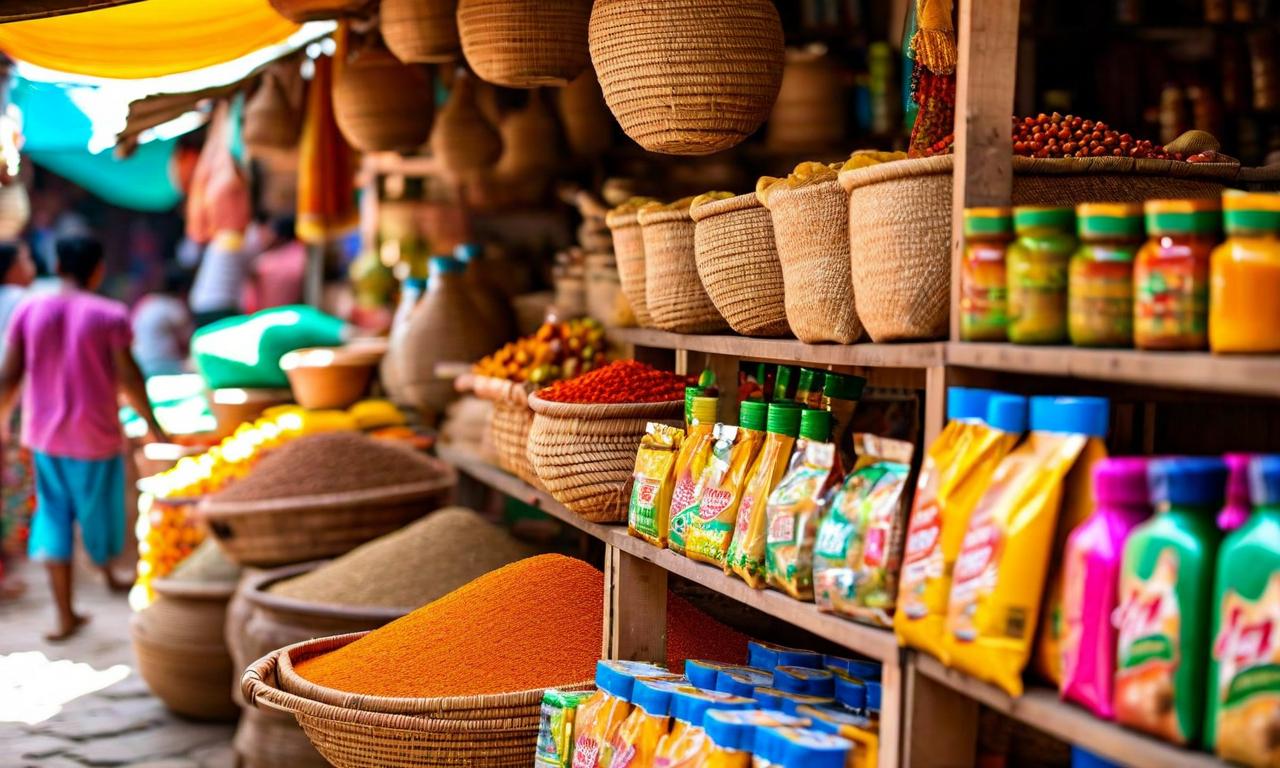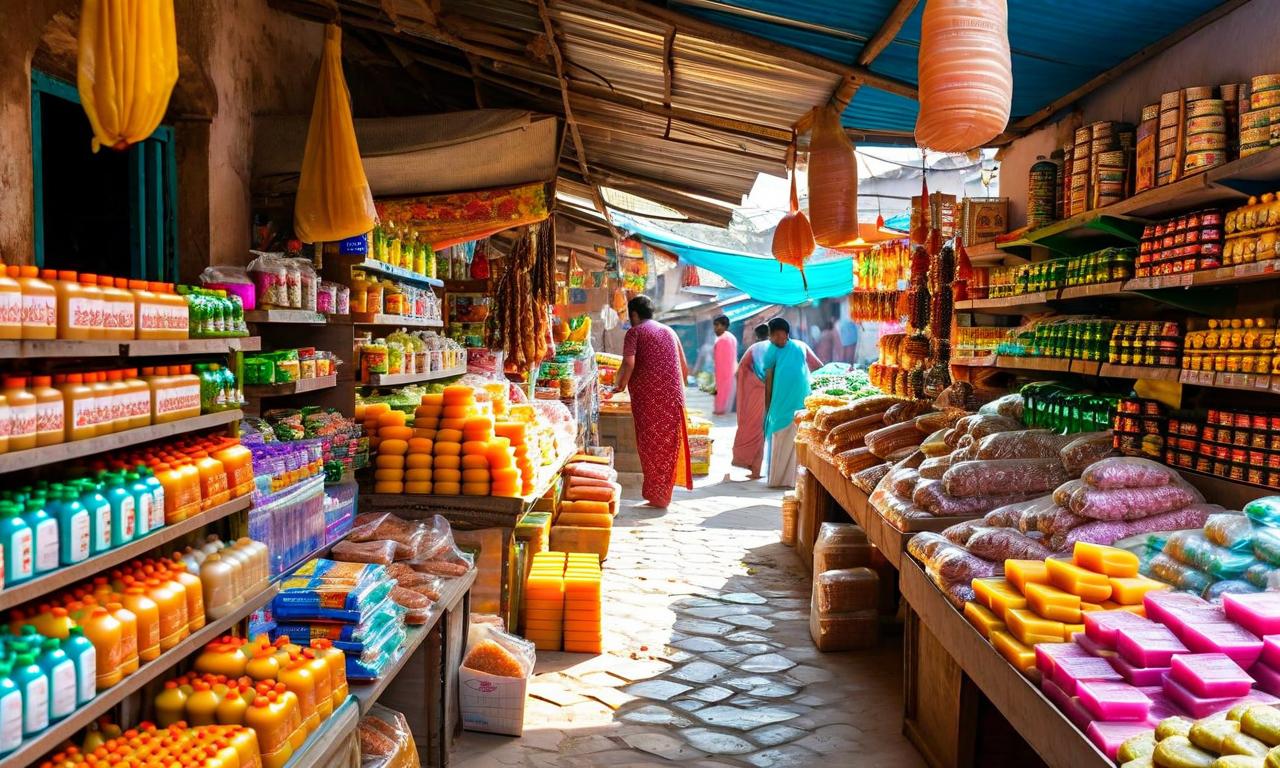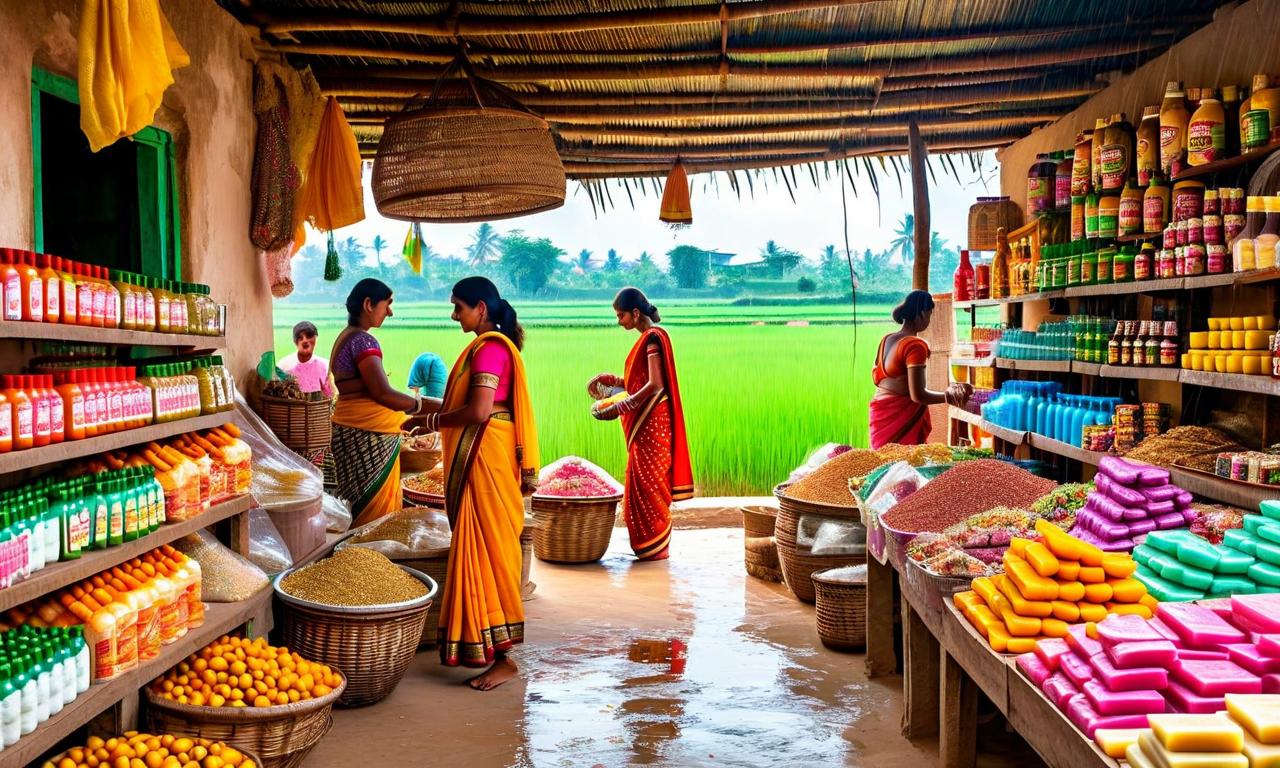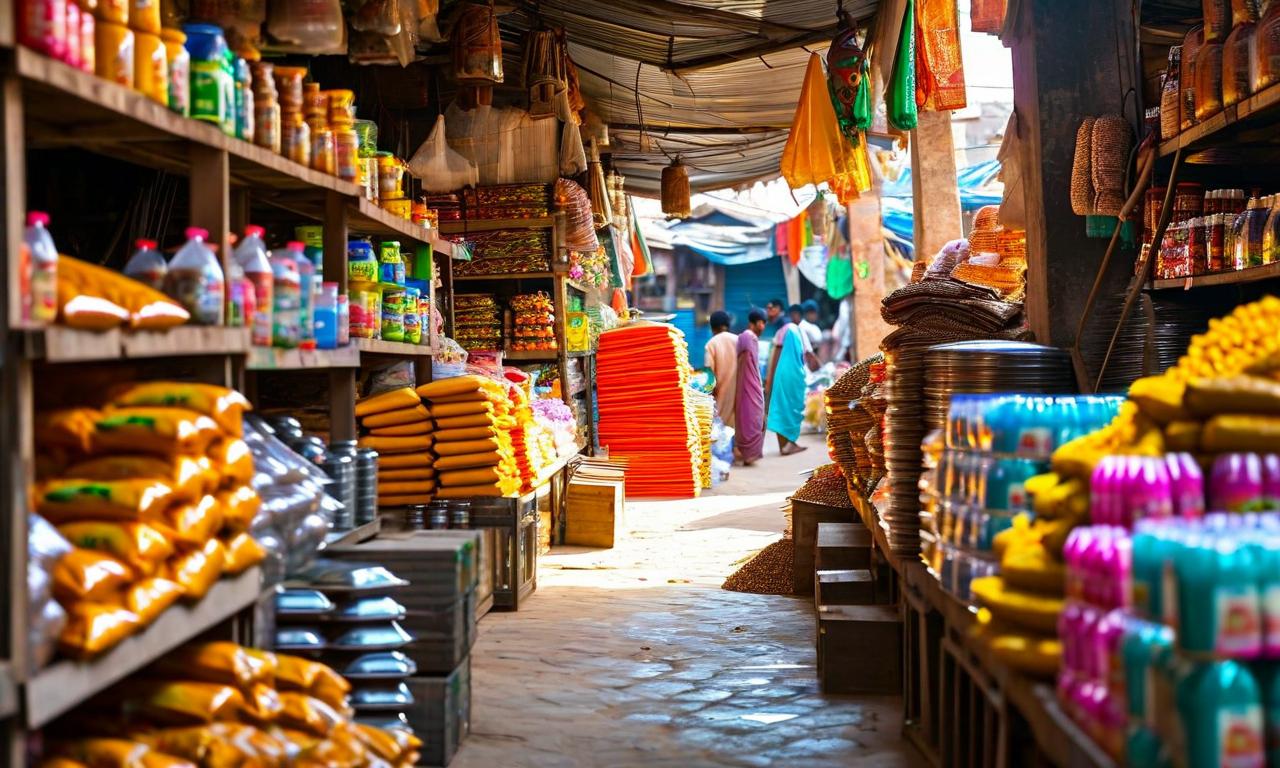FMCG Giants Face Stiff Competition as Consumers Shift to Regional Brands
India's FMCG sector is experiencing a significant shift as regional and newer brands gain popularity, challenging established companies. Consumers are gravitating towards these brands for value and localized preferences. Regional players are using aggressive pricing and better distributor margins to gain market share. Major companies like HUL, Britannia, Dabur, and Marico are facing competition in various product segments. The industry overall shows subdued growth, but some companies like Honasa Consumer report double-digit volume growth. Established players are adapting strategies to maintain market positions in this evolving landscape.

*this image is generated using AI for illustrative purposes only.
The Fast-Moving Consumer Goods (FMCG) sector in India is witnessing a significant shift in consumer preferences, with regional and newer brands gaining traction in the market. This trend is posing challenges for established FMCG companies and reshaping the competitive landscape of the industry.
Consumer Shift Towards Regional Brands
Varun Alagh, CEO of Honasa Consumer, has highlighted a notable change in consumer behavior within the FMCG sector. Customers are increasingly gravitating towards regional and newer brands, driven by a desire for value and products that cater to localized preferences. This shift is enabling regional players to challenge the dominance of established FMCG giants.
Competitive Strategies of Regional Players
Regional brands are making their mark through aggressive pricing strategies and by offering better margins to distributors. This approach has allowed them to gain market share and compete effectively with larger, more established companies.
Impact on Major FMCG Companies
Several major FMCG companies have acknowledged the growing competition from smaller regional brands in their recent quarterly results:
- Hindustan Unilever Limited (HUL): Facing dispersed competition in the detergent bar segment.
- Britannia: Preparing to counter regional competitors with a 'war chest' strategy focused on smaller territories.
- Dabur: Lost market share in its 'Lal Tail' business to a small player in Uttar Pradesh and Bihar.
- Marico: Its Parachute coconut oil brand encountered challenges from value-added hair oil competitors.
Industry Growth and Volume Trends
The FMCG industry overall has experienced subdued growth with limited volume gains. However, some companies are bucking this trend:
- Honasa Consumer: Reported double-digit volume growth and anticipates this positive trend to continue for the next three quarters.
Outlook and Strategies
As the competition intensifies, major FMCG companies are likely to adapt their strategies to maintain their market positions. Britannia's 'war chest' approach for smaller territories indicates that established players are taking the threat from regional brands seriously and are preparing to defend their market share.
The evolving landscape presents both challenges and opportunities for the FMCG sector. While established brands face increased pressure, the trend also reflects a dynamic market with growing consumer choices and the potential for innovation in product offerings and marketing strategies.
As this shift continues, it will be crucial for all players in the FMCG sector to closely monitor consumer preferences, adapt to local tastes, and optimize their value propositions to remain competitive in this changing market environment.



























